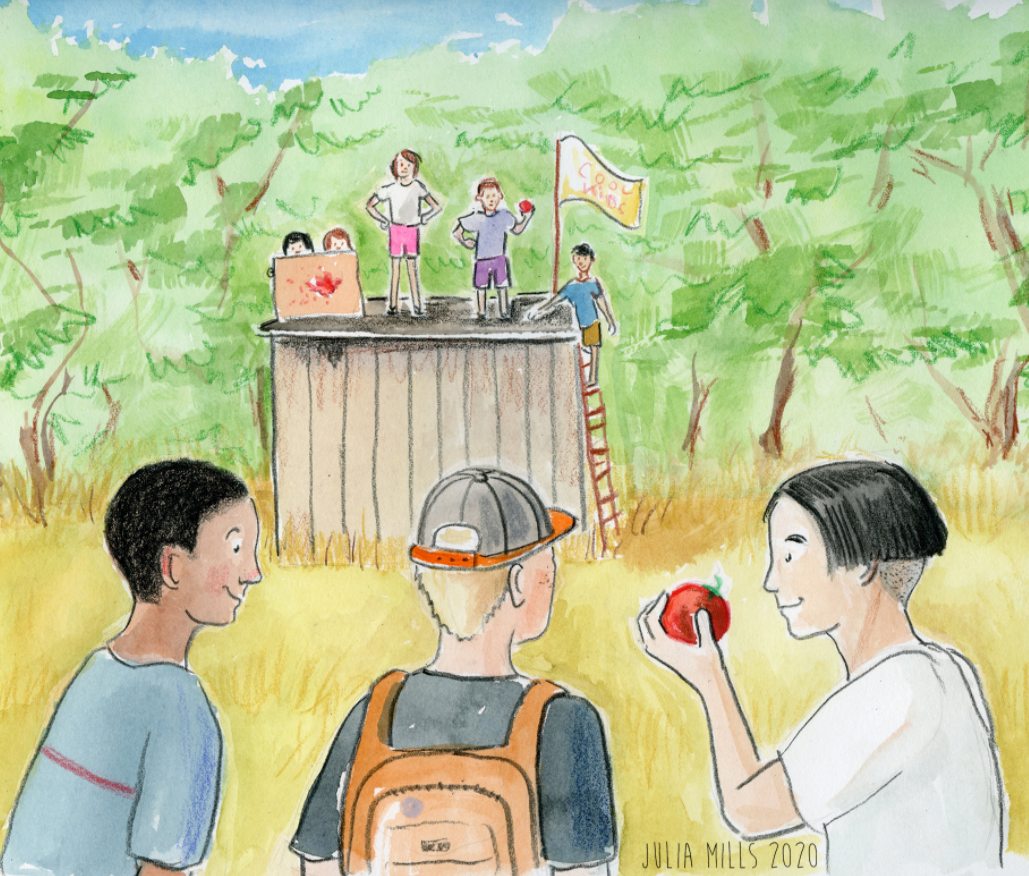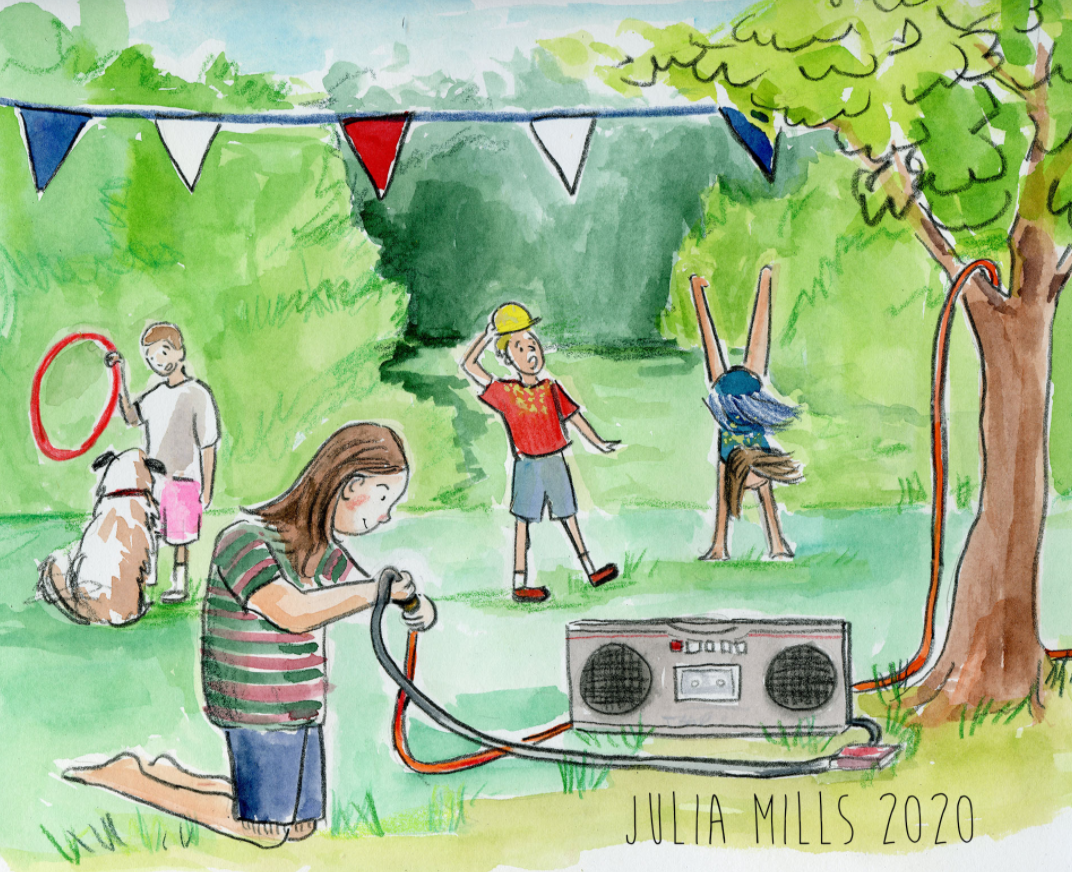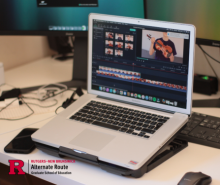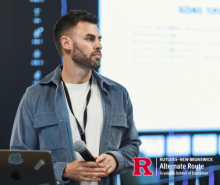Alternate Route Alum Julia Mills' Key Tips for Passing edTPA

Illustration by Julia Mills
edTPA is an assessment used nationally by teacher preparation programs. Its purpose is to measure skills and knowledge so teachers can best perform in the classroom. The assessment is performance-based and subject-specific, offering versions for 27 teaching fields. edTPA measures success based on three tasks: planning, instruction and assessment.
To prepare for edTPA, aspiring teachers prepare a portfolio to showcase their experiences and skills gained from student or provisional teaching. This includes lesson planning, student engagement examples and how the aspiring teacher will analyze their students’ strengths and weaknesses and adjust to their learning abilities. As part of the portfolio, candidates also submit a video of themselves in a real classroom. The entire portfolio is then scored by highly trained educators.
Preparing for edTPA is a big undertaking, but it is a necessary process for those with dreams of teaching. Alternate Route alum Julia Mills has put together multiple tips for those who need a little guidance throughout the process. Mills is an artist, writer and educator living in Southern New Jersey. Additionally, Mills is Winner of Honorable Mention in the published category Illustration Society of Children's Book Writers and Illustrators 2019.
Below are eight tips from Mills that will help prepare aspiring educators for edTPA.

Illustration by Julia Mills
1. Start as early as possible
There is no harm in starting early. Mills bought the test in the spring, did lesson planning and then filmed her real-life classroom example. This helped Mills, as it left her with a year to complete the writing and editing.
2. Read the rubrics
According to Mills, “The rubrics are everything.” She admits the rubric can appear confusing, so Mills recommends focusing on one task at a time, beginning with planning.
3. Plan thoroughly
Mills planned every step of the lesson on sticky notes and reviewed them before filming. Like Mills, find an organizational plan that works best for your brain. You will only need to choose one standard, state or national, so Mills recommends keeping it simple and using a standard “that pinpoints exactly what you are teaching.”
Once everything is planned out, do a complete lesson plan walkthrough.
“Pretend you are giving it to someone who doesn’t know how to teach,” Mills said.
4. Teach your best class
Teachers perform best when they know their students and classroom culture, so avoid filming at the beginning of the school year or the week before winter break. Mills recommends having at least one Individualized Education Programs (IEP) student in the class and getting the lessons done in a short period of time.
“I did three lessons across two days,” she said. “Normally that would take three weeks. Be upfront with your kids about filming. I’m not saying bribe them, but a prize for good behavior helps.”
Finally, consider all the modifications you do for students while teaching and write them down so you don’t forget later.

Illustration by Julia Mills
5. Plan to succeed
The edTPA assessment is heavily weighed for language use, so if you teach a subject like art, gym or music, make sure to have a written or spoken component.
“I chose writing because it was much easier for me than filming verbal responses,” Mills said. “Because of the language-use requirements, my lessons were more focused on responding to art, rather than creating art. Make this decision early on when creating your lesson.”
If you are a special-area teacher, speak with the students’ main teacher and/or special-ed teacher. They can give you advice on modifications, what the students are learning in class, etc.
6. Keep your scope small
“You do not need to teach a whole unit. Do not overreach.”
7. Don’t stress over filming
You will only use short clips and not the entire lesson, so don’t worry if your performance isn’t perfect. Mills recommends filming the entire lesson, as it will give you more choices later on.
“It’s okay if things go wrong,” Mills said. “Use those moments when you write your reflection on how to improve.”
8. Keep all the work produced by all the students
For edTPA, you will need to choose focus students, however, it’s important to round up everyone’s work. Make sure the work can be translated into a chart and/or graph to show student learning.
“You must have quantifiable objectives,” Mills said.
If you’re considering following your dream of teaching, Rutgers Alternate Route can offer you the support and training you need to succeed. Be sure to follow Rutgers Alternate Route on Twitter for more information and stories from the field of education.

 Heather Ngoma has over 25 years of experience collaborating with educators across New Jersey to drive education innovation. She currently serves as the Director of the Rutgers-GSE Alternate Route Program in the Department of Learning and Teaching, a program which helps career changers, recent college graduates, and other aspiring education professionals become licensed teachers in New Jersey. Follow her on Twitter @heatherngoma.
Heather Ngoma has over 25 years of experience collaborating with educators across New Jersey to drive education innovation. She currently serves as the Director of the Rutgers-GSE Alternate Route Program in the Department of Learning and Teaching, a program which helps career changers, recent college graduates, and other aspiring education professionals become licensed teachers in New Jersey. Follow her on Twitter @heatherngoma.





